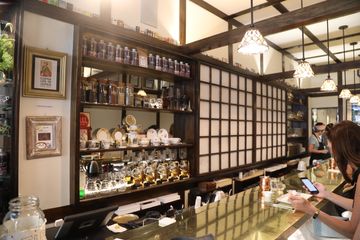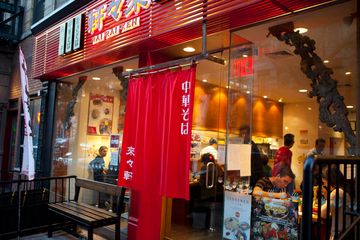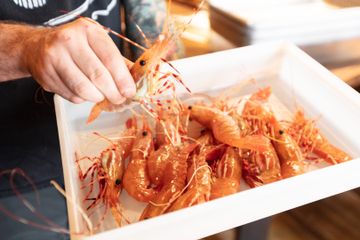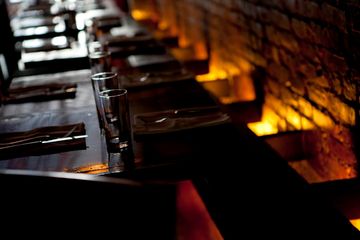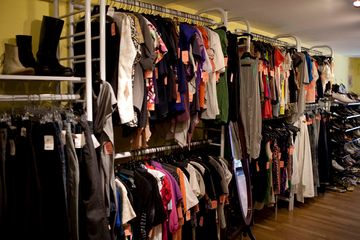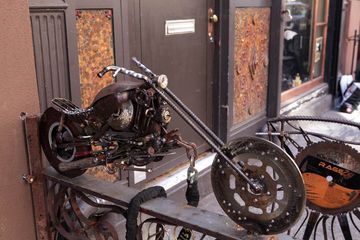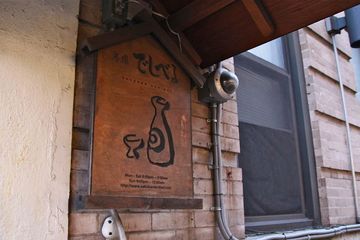The wasabi is from Oregon, the rice is Californian. The soy sauce comes from Kentucky, and the fish are fresh from Long Island. In fact, the only thing made in Japan at Mayanoki is the Junmai sake, and even that is offered up alongside other, local sakes which are made at a brewery in Brooklyn; while wine is available, it is not Italian. The American-ness of the inventory is the first hint at the fact that, while Mayanoki serves sushi, the cuisine is not Japanese. As Mayanoki co-founder TJ Provenzano explains, Mayanoki is a New York sushi restaurant - an American sushi restaurant, “and I don’t just mean California rolls by that, ” he adds. Although the idea of sustainable locally-sourced sushi and wine is unique in an industry still excited by the exotic and imported, Provenzano insists that Mayanoki’s food philosophy is a return to folk ways of feeding. “Sushi, traditionally, hundreds even thousands of years ago, was what was local, what was seasonal, what they could get from the water directly next to them - not let’s drag the biggest predator out of the ocean that we can find, ” Provenzano asserts. “This is kind of a return to that. ”Mayanoki’s wine selection, although entirely from New York, is similarly inspired by old-fashioned Italian ideas; “It’s the philosophy that the Europeans have always had, ” says Provenzano, justifying the decision to only look locally for Mayanoki’s wines. “When you go to Italy, you’re not drinking American wine. When you go to Italy, you’re dragging your jug to the top of the hill and filling it with whatever they have. ”However, the creation of what Provenzano claims is New York’s first and only all-sustainable sushi omakase is as much a product of a respect for the past as it is a means of protecting the planet. “It’s taking the farm to table movement and applying it to the ocean without sacrificing quality, ” states Provenzano. In practice, an ocean-based farm to table movement means both buying fish from local waters and avoiding endangered species even if they are popular sushi favorites. Instead of highly-endangered but highly-acclaimed species like blue fin tuna, Mayanoki serves what, as far as their fame is concerned, are the underdogs of the ocean - species like porgy, blue fish, and line-caught fluke. Mayanoki also applies the farm to table concept to its wines. “Especially in New York, chefs and restaurants are so particular about … having their vegetables grown locally, their produce, their meats raised humanely and locally, ” Provenzano notes. “Yet, their entire wine list is from France or from Italy, and, to me, that makes no sense. ” So, Mayanoki’s wines come from the Hudson Valley or the Finger Lakes, and one of the things Mayanoki is recognized for is its pairings of local sushi with local wines. “‘If it grows together, it goes together’ is kind of our philosophy, ” Provenzano says. “It makes the pairing just seamless that way. ”Aside from honoring old traditions and saving ocean habitats, Provenzano, who wears a Sea Shepherd shirt, mentions that American sushi and New York wines are the only way that he and the rest of the team can serve a piece of themselves at Mayanoki: at the time of writing, no one who works at Mayanoki is Japanese. “We’re New Yorkers, ” Provenzano says proudly of Mayanoki’s founders. Jeff Miller, the current chef at the time of writing, is from Northern California. “He went to the University of Florida, ” Provenzano goes on to say; “He’s a White dude like me. ”The chef is one of the most crucial variables in the sustainable sushi formula. The job goes beyond just preparing food. A Mayanoki chef must also believe in the restaurant’s environmentalist vision and support it through his or her work. Such all-encompassing expectations can make finding a new chef a difficult process. The intersection of sufficient sushi-making ability and satisfactory sushi philosophy is rarely encountered. However, finding the right chef is a point on which Provenzano is unwavering. “Change happens through the chefs, ” he contends. “The chefs are serving this food. It’s not up to the consumer to say ‘Hey, we only want sustainable seafood from you. ’ It’s up to the chef to say ‘We’re only going to give you sustainable seafood’… and then, the consumers will follow. ”One of Mayanoki’s approaches to spreading its message among consumers is remaining at a middling price point, 115 dollars per person. By charging less than many of the other omakase in the city, Mayanoki hopes to be more accessible and thus able to reach a larger community of people. “We’re talking about sustainable sushi, ” Provenzano specifies. “It has a larger mission than just feeding you dinner… Sustainable sushi should not be something that’s just for the rich. It should be something that anyone can enjoy. ”As it sustains its community with sushi and feeds it with knowledge, Mayanoki contributes to the emergence of new life on and around its side street. All of the restaurant’s fish-heads and other organic waste are composted and used to grow flowers in the nearby community garden on Avenue B. Its oysters are donated to the Billion Oyster Project, which is working to restore oyster populations in New York Harbor. “We’re just so proud to be a part of the community rather than trying to milk it, ” Provenzano remarks. “That’s just the only way we’re gonna do it. ”Tucked away beneath an outdated awning that says “Against the Grain, ” the name of the wine bar that previously occupied the space, Mayanoki is unmarked, underground, and somewhat unusual among sushi restaurants. Everything, up to and including its name, is unorthodox. “Mayanoki actually doesn’t mean anything, ” Provenzano admits. “It’s a name that we kind of invented… I’ve been told that maya means in front of and noki means tree, so if you literally translate it, it means to be in front of the tree. ”Situated on Sixth Street, Mayanoki is, in fact, beside a botanical garden and between two trees. It is also located at the at (currently) lonely forefront of a movement to serve sushi sustainably.
